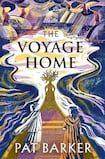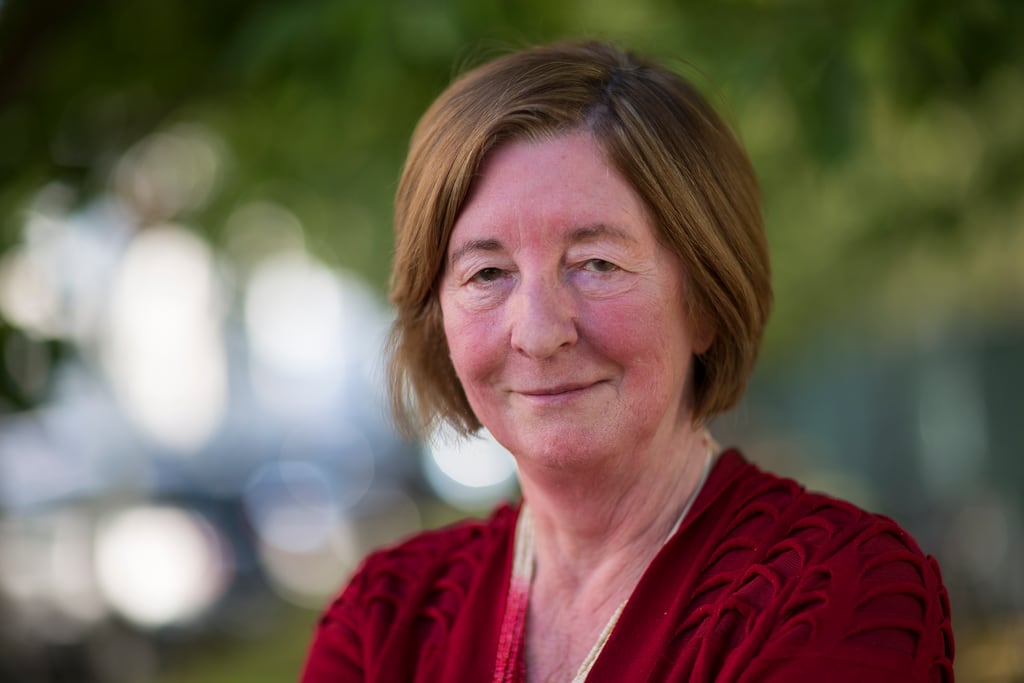
According to Dares Phrygius, a Trojan priest who allegedly wrote an account of the Trojan wars, Cassandra, the priestess daughter of the defeated King Priam of Troy, was “of moderate stature, round-mouthed, and auburn-haired. Her eyes flashed. She knew the future.” It is the future – treacherous, murky and uncertain, despite Cassandra’s prophecies – that concerns Pat Barker in The Voyage Home, the final instalment of her trilogy about the Trojan wars which began with The Silence of the Girls (2018) and continued with Women of Troy (2021).
Having vanquished Troy, with Priam’s dead body displayed and left to rot on the shore and his queen, Hecuba, killing herself in despair before the vessels sail back to Greece in triumph, the victor, King Agamemnon of Mycenae, should be elated. He has his “concubine”, Priam’s daughter Cassandra, who now, along with the other captive women, is merely part of the spoils of war. Priam, however, has, through a secret marriage, elevated her status above that of a slave, the later revelation of which will determine their terrible joint fate.
Cassandra, who has been cursed by the god Apollo (after rejecting his advances) to be able to predict the future yet not be believed, foresees this ghastly event. Witness to the action and narrator of the novel is Cassandra’s maid, Ritsa. As with the previous books in the series, Barker uses the device of an invented or rather unrecorded character (since the Trojan wars themselves are myth, this is an interesting metafictional impulse) to frame the story – and also give voice to the historically unvoiced. Barker’s great achievement in these reworkings of famous myths is her use of the vernacular, of everyday language – transplanting the language of working-class northeastern England to ancient Greece, with its “virulent” green sea, its unspeakable terror and beauty.
The Voyage Home is loosely based on the first part of Aeschylus’s Oresteia. We all know – or think we know – the tale: Agamemnon, 10 years gone from Mycenae and his queen Clytemnestra, sails home only for her to avenge his earlier sacrifice of their daughter Iphigenia, enacted in order to appease the gods and ensure favourable winds set for the advance on Troy. It is a blood-soaked story, and most of the book concentrates on Cassandra – who knows and accepts that her fate is bound up with that of Agamemnon – trying to work out exactly how the vengeance will be carried out.
READ MORE
Cassandra is a tricksy, wilful character: “yellow-eyed”, according to Ritsa, who is herself by no means a docile servant, or “catch-fart”. Barker’s language is gorgeously, reliably rich and salty, and the book is peppered with quickfire, rebarbative dialogue. Ritsa is a sharp-tongued, clever herbalist with skill and foresight. Barker, as with her other novels in the trilogy, gives prominence and articulacy to women whether they are deemed important or insignificant.
Clytemnestra is a fascinating study in repressed grief: Helen of Troy’s reputedly less attractive older sister, who has run Mycenae in Agamemnon’s absence and now has to surrender that authority and accept, too, his new “love”. Barker depicts a House of Atreus where doom casts a long, foreboding shadow: a palace – with its silent, watchful stone lions situated at the entrance – riven with psychological trauma. Tiny handprints appear on the walls, children’s voices are heard in empty rooms. These are purportedly – although no one admits it – the ghosts of the little boys murdered by Agamemnon’s father Atreus as revenge for his wife having an affair with his brother. The children were allegedly cooked and served in a feast for their father Thyestes to eat, Titus Andronicus-style.
Parker doesn’t spare us the grisly imagery but it’s mostly a desperate sadness that prevails in the shadowy rooms, and in the form of the teenage Electra, Agamemnon and Clytemnestra’s younger daughter, a pallid, whining daddy’s girl riddled with eczema and fury. (Iphigenia, sanctified and resented through her death, was the favourite of both parents). Their son and heir Orestes is kept neatly out of the way for Clytemnestra to carry out the long-planned murder of her husband and coincidentally the “slim, white body” of Cassandra.
This is domestic drama as much as epic and it is where the success of the novel lies: the squalid human tragedy, the pointlessness of the war machine. Agamemnon is a no conquering hero but a man who will meet a reckoning – and his people, who have lost so much in the cause of his obsession with razing Troy, are poor, war-weary and restless. His entrance into the palace – watched by reams of spectators – is orchestrated by Clytemnestra, who persuades her hated, uneasy yet unsuspecting husband to walk on a red carpet as part of the public spectacle. As Ritsa comments: “I don’t think I’m the only person who remembers seeing Agamemnon wade through his palace on a river of blood.”
Ritual, duty, bravery, fear: Barker encapsulates them all as well as earthy humour and contempt. She sheds light on the moral complexity of her characters, their gaping fallibility. Why do so many writers choose to reinterpret myth and especially these ones? Colm Tóibín’s House of Names from 2017 is another retelling of the Clytemnestra story; Eugene O’Neill’s 1931 play Mourning Becomes Electra also took up the revenge of her children on the murder of their father. Though distant, these dramas seem glaringly compelling and urgent in the light of current events; throughout the cycles of history, human beings never learn.













